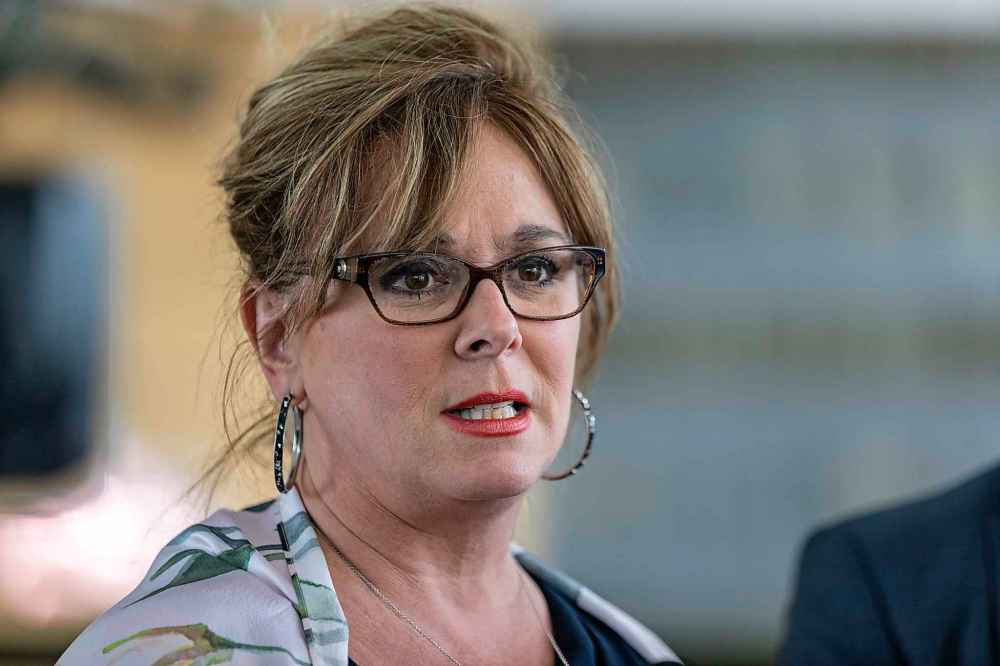St. B CEO expenses symptom of provincial health-care bureaucracy
Read this article for free:
or
Already have an account? Log in here »
To continue reading, please subscribe:
Monthly Digital Subscription
$0 for the first 4 weeks*
- Enjoy unlimited reading on winnipegfreepress.com
- Read the E-Edition, our digital replica newspaper
- Access News Break, our award-winning app
- Play interactive puzzles
*No charge for 4 weeks then price increases to the regular rate of $19.00 plus GST every four weeks. Offer available to new and qualified returning subscribers only. Cancel any time.
Monthly Digital Subscription
$4.75/week*
- Enjoy unlimited reading on winnipegfreepress.com
- Read the E-Edition, our digital replica newspaper
- Access News Break, our award-winning app
- Play interactive puzzles
*Billed as $19 plus GST every four weeks. Cancel any time.
To continue reading, please subscribe:
Add Free Press access to your Brandon Sun subscription for only an additional
$1 for the first 4 weeks*
*Your next subscription payment will increase by $1.00 and you will be charged $16.99 plus GST for four weeks. After four weeks, your payment will increase to $23.99 plus GST every four weeks.
Read unlimited articles for free today:
or
Already have an account? Log in here »
Hey there, time traveller!
This article was published 16/07/2019 (2339 days ago), so information in it may no longer be current.
It didn’t take long for St. Boniface Hospital president and chief executive officer Martine Bouchard to start racking up her taxpayer-funded expense account.
Bouchard (who took the job in May 2018) ran up $19,171 in personal expenses on top of her $275,000 salary in 2018-19, according to expense reports released by the Winnipeg Regional Health Authority.
The vast majority of Bouchard’s expenses were for out-of-province travel — mostly accommodation, airfare, meals and transport — including conferences in Orlando, Fla., Chicago and Baltimore.

Bouchard, who lives in Montreal and commutes home on weekends, took seven work-related trips, including a three-day Lean Healthcare Transformation Summit in Chicago in June 2018, at a cost of $4,089 (including $1,869 in conference fees).
She also attended a December 2018 National Forum on Quality Improvement in Health Care in Orlando, a five-day summit that cost taxpayers $4,938 (including $2,460 in conference fees). She made two trips to Baltimore (one in December, one in February) at a cost of $7,208 (including $4,333 in conference fees), as part of a three-part training seminar called: Toward a Culture of Ethical Practice in Healthcare.
Winnipeg hospital CEO/COO expenses 2018-19
Concordia Hospital — president/COO Valerie Wiebe
Vehicle expense: $7,800
Parking: $253
Food & beverage: $595 (staff recognition event, no alcohol, reimbursed by organization)
Cellphone: $859
Total: $9,507
Concordia Hospital — president/COO Valerie Wiebe
Vehicle expense: $7,800
Parking: $253
Food & beverage: $595 (staff recognition event, no alcohol, reimbursed by organization)
Cellphone: $859
Total: $9,507
Seven Oaks General Hospital
(Lists three COOs or designated senior officers throughout the year)
Carrie Solmundson: $1,743 (vehicle, cellphone, other)
Shauna Boitson: $233 (cellphone, other)
Brenda Badiuk: $4,961 (vehicle, cellphone, other)
Total: $6,937
Misericordia Health Centre — CEO Caroline DeKeyster
Mileage, parking, taxi: $279
Cellphone: $667
Travel (Catholic Health Association conference, Toronto): $1,124
Travel (International Misericordia Family Meeting, Montreal): $1,506
Total: $3,577
Health Sciences Centre, Grace Hospital and Victoria General Hospital operated under the Winnipeg Regional Health Authority in 2018-19. They are not required by law to publish expenses of senior staff.
— source: Winnipeg Regional Health Authority
Bouchard also travelled to Ottawa (accreditation meeting), Montreal (Molson Foundation recognition event) and Vancouver (presenting at the Big Data Healthcare Summit), each of which cost taxpayers less than $400.
There were also $2,009 in miscellaneous expenses, including cellphone charges, transport, and meals during meetings. (Bouchard’s $7,150 vehicle expense is separate and is covered by the Catholic Health Corporation of Manitoba.)
St. Boniface Hospital director of corporate affairs and communications Micheline St-Hilaire said the summits and training allow the CEO to network at national and international levels.
“Taking part in such events ensures St. Boniface Hospital continues to be an innovative leader in quality patient care, compassion, and excellence in all that we do,” she said in a statement.
One would expect senior health officials to attend some out-of-province conferences for training purposes and to learn from other jurisdictions. However, Bouchard’s travels seem excessive — especially with the problems plaguing her hospital in recent months.
No other Winnipeg hospital CEO listed in the 2018-19 report had expenses above $10,000; none travelled as extensively as Bouchard did.
The issue here isn’t so much the cost of one or two trips, it’s the multiple layers of bureaucracy in the provincial health-care system that continue to grow and sap front-line services of scarce resources.
Instead of getting simpler and more cost-effective, the administration of government health care in Manitoba has become increasingly bloated and confusing.
When regionalization was first introduced in the late 1990s under the then-Filmon government, all hospitals and health facilities were supposed to fall under one administrative umbrella.
The Winnipeg Hospital Authority was to take over from all hospital boards, and the Winnipeg Long-Term Care Authority would run long-term care facilities. (The WHA and WLTCA later combined to become the WRHA.)
However, for a number of faith-based and other reasons, that only partially occurred. Some facilities, such as Health Sciences Centre, handed over their keys, but others, including St. Boniface, maintained their independence.
It’s a rat’s nest– an expensive rat’s nest. It’s made up of so many administrative layers, it’s nearly impossible to operate efficiently and effectively.
Over time, the province’s regional health authorities grew substantially in size, and many health-care facilities kept their boards and corresponding bureaucracies.
To confuse matters further, the Pallister government has since added another layer of bureaucracy (with its own CEO) called Shared Health, to provide even more “governance” at the provincial level.
So we have some health-care facilities that fall under the authority of their respective RHAs, others that have maintained their board independence (but still get funding and marching orders from their RHA), and others still that fall under Shared Health.
Then, there’s Manitoba Health, the government department that oversees it all, providing funding and broad policy direction.
It’s a rat’s nest — an expensive rat’s nest. It’s made up of so many administrative layers, it’s nearly impossible to operate efficiently and effectively.
On the one hand, the Pallister government is consolidating acute care hospital services in Winnipeg to improve patient care, which appears to be a sound idea in theory. But on the other, they’re expanding the size of the health-care bureaucracy.
Few would question the value of a hospital CEO attending the odd conference outside the province. But when you consider the bureaucratic empire-building that’s been going on in recent years, it’s increasingly difficult to accept.
tom.brodbeck@freepress.mb.ca

Tom has been covering Manitoba politics since the early 1990s and joined the Winnipeg Free Press news team in 2019.
Our newsroom depends on a growing audience of readers to power our journalism. If you are not a paid reader, please consider becoming a subscriber.
Our newsroom depends on its audience of readers to power our journalism. Thank you for your support.
History
Updated on Tuesday, July 16, 2019 7:21 PM CDT: Fixes typo











